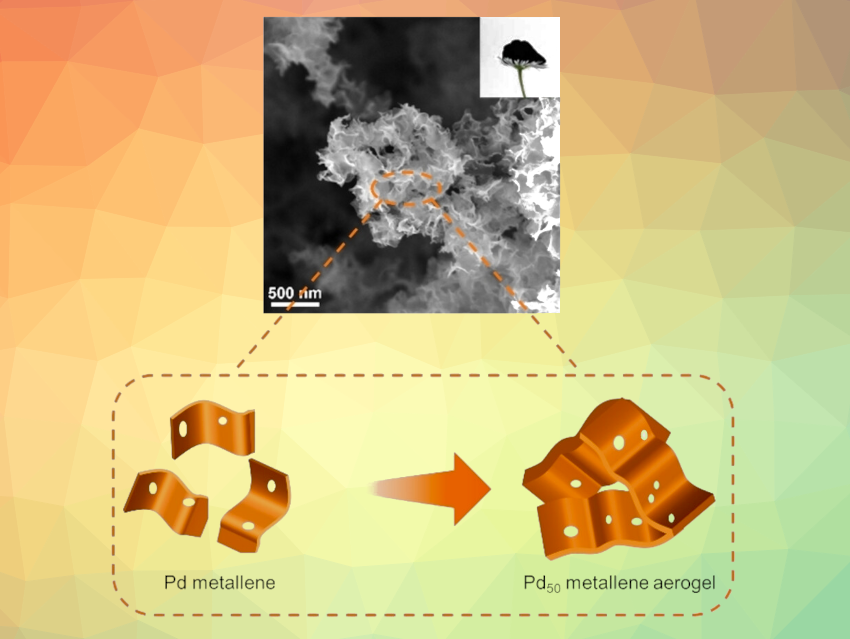Energy storage and conversion by electrocatalytic processes, e.g., in fuel cells, can be important for reducing the dependence on burning fossil fuels. For example, in direct formic acid fuel cells, suitable electrocatalysts are needed for the formic acid oxidation reaction (FAOR) at the anode and the oxygen reduction reaction (ORR) at the cathode. Without catalysts, these reactions have sluggish kinetics.
Metal aerogels assembled from colloidal nanocrystals can be good catalyst candidates due to their conductivity, porosity, and low density. Metallenes, i.e., metal analogues of graphene, are metal films with thicknesses below 5 nm. They could be useful building blocks for metal aerogels, but tend to aggregate, which can make the preparation of aerogels without support material challenging.
Alexander Eychmüller, Dresden University of Technology, Germany, and colleagues have prepared Pd2+-rich palladium metallene (palladene) aerogels that show high electrocatalytic performances in the FAOR and the ORR. The team incubated Pd metallene in a dimethylformamide (DMF) solution at different temperatures to form gels via self-assembly, followed by supercritical CO2 drying (SCD) to obtain the desired aerogels. They found that Palladene50, which was prepared at 50 °C, is particularly rich in Pd2+ centers and can serve as a bifunctional electrocatalyst.
For the FAOR, Palladene50 shows a mass activity that is 5.66 times higher than that of a Pd/C catalyst and 1.47 times higher than that of a conventional Pd aerogel. It also shows a good half-wave potential in the ORR in comparison with Pd/C and a Pd aerogel. The developed aerogel also showed good stability in these electrocatalytic reactions. Overall, the work expands the possible applications of metal aerogels and provides a useful bifunctional electrocatalyst.
- Direct Synthesis of Pd2+‐Rich Palladene Aerogels as Bifunctional Electrocatalysts for Formic Acid Oxidation Reaction and Oxygen Reduction Reaction,
Cui Wang, Wei Wei, Maximilian Georgi, René Hübner, Christine Steinbach, Yannik Bräuniger, Simona Schwarz, Stefan Kaskel, Alexander Eychmüller,
ChemElectroChem 2024.
https://doi.org/10.1002/celc.202400060



